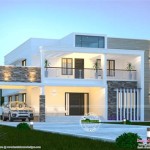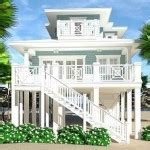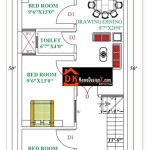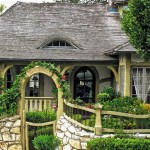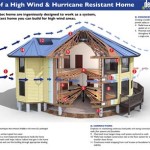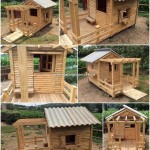Design Your Dream Home: House Plans with Mother-In-Law Suites and Garage
Designing a home involves a complex series of considerations, from spatial layout to functional requirements. Increasingly, homeowners are seeking adaptable designs that cater to multi-generational living or provide rental income opportunities. Incorporating a mother-in-law suite, also known as an accessory dwelling unit (ADU), alongside a thoughtfully designed garage, can significantly enhance a home's value and versatility. This article explores the key aspects of planning and designing a dream home with these features.
Understanding the Need for Mother-In-Law Suites
The growing popularity of mother-in-law suites is driven by several factors. Firstly, an aging population frequently necessitates that elderly parents move in with their adult children. A dedicated suite provides them with privacy and independence while ensuring they receive the care and support they need. Secondly, the rising cost of living pushes many families to seek ways to reduce expenses. Renting out a mother-in-law suite can generate a significant income stream, offsetting mortgage payments or other financial burdens. Thirdly, a well-designed suite can serve multiple purposes, from a guest room for visiting relatives to a home office or a space for adult children returning home. Finally, adding an additional dwelling unit can substantially increase the overall value of your property, making it a worthwhile investment for the future.
Before embarking on the design process, a thorough needs assessment is vital. Determine the specific requirements of the suite's intended occupant(s). Consider factors such as mobility limitations, dietary needs, and lifestyle preferences. Will the occupant require wheelchair accessibility? Will they need a fully equipped kitchen or just a kitchenette? Will they prefer a separate entrance and outdoor space? Answering these questions will guide the design process and ensure the suite meets the needs of its residents. It's also essential to review local zoning regulations and building codes pertaining to ADUs. These regulations can vary significantly depending on location and may dictate the size, layout, and permitted uses of the suite.
When integrating a mother-in-law suite into the overall house plan, consider its location relative to the main living areas. Ideally, the suite should offer a degree of separation to ensure privacy for both the occupants and the primary residents of the home. Common design approaches include attaching the suite to the main house with a separate entrance, creating a standalone unit in the backyard, or locating the suite above the garage. Each option has its advantages and disadvantages in terms of cost, space utilization, and privacy.
Careful attention to interior design is crucial for creating a comfortable and functional living space within the mother-in-law suite. Maximize natural light by incorporating large windows and skylights. Choose durable and easy-to-maintain materials for flooring, countertops, and cabinetry. Optimize the layout to maximize usable space. Consider incorporating universal design principles, such as wider doorways, grab bars in the bathroom, and lever-style door handles, to enhance accessibility for individuals with mobility limitations.
Strategic Garage Design and Integration
The garage plays a crucial role in the overall functionality and aesthetic appeal of a home. Beyond its primary function of housing vehicles, a well-designed garage can serve as a workshop, storage space, or even a recreational area. When designing a home with a mother-in-law suite, the garage's placement and configuration must be carefully considered to optimize space utilization and minimize disruption to the suite's occupants.
The size of the garage should be determined based on the number of vehicles to be housed, as well as any additional storage needs. A standard two-car garage typically measures around 20 feet wide by 20 feet deep, while a three-car garage is significantly larger. Consider the option of an oversized garage to provide ample space for storage, a workbench, or recreational equipment. The garage door selection should complement the overall architectural style of the home. Common options include sectional doors, roll-up doors, and carriage house doors. Choose a door with insulation to improve energy efficiency and reduce noise transmission.
Integrating the garage seamlessly into the overall house plan requires careful consideration. When attaching the garage to the main house, ensure proper insulation and soundproofing to minimize noise transfer between the garage and living areas. Consider the placement of the garage door relative to the street. A garage door that faces the street can dominate the facade of the home, while a side-entry garage can create a more aesthetically pleasing appearance. Explore the possibility of constructing the mother-in-law suite above the garage. This configuration maximizes space utilization and provides a separate entrance for the suite's occupants. However, it's essential to ensure adequate soundproofing and insulation to minimize noise and vibration.
The garage's interior design should be functional and organized. Install shelving and storage cabinets to maximize space and keep clutter at bay. Consider installing a workbench or tool chest for DIY projects. Adequate lighting is essential for safety and visibility. Install overhead lighting fixtures and task lights to illuminate the workspace. Ensure proper ventilation to prevent the buildup of fumes and odors. If the garage is used as a workshop, consider installing an exhaust fan. Epoxy flooring is a durable and easy-to-clean option for garage floors. It resists stains, chemicals, and wear and tear. Consider installing a floor drain for easy cleanup.
Key Design Considerations for Combined Spaces
Successfully integrating a mother-in-law suite and garage into a single house plan requires careful attention to several key design considerations. These include privacy, accessibility, energy efficiency, and compliance with local regulations.
Privacy is paramount when designing a multi-generational home. Ensure the mother-in-law suite has a separate entrance to provide its occupants with a sense of independence. Consider placing the suite away from the main living areas of the house to minimize noise and visual intrusion. Install soundproofing insulation in the walls and floors to reduce noise transmission. Provide the suite with its own outdoor space, such as a private patio or balcony. Landscaping can also be used to enhance privacy by creating a visual barrier between the suite and the main house.
Accessibility is crucial for ensuring the comfort and safety of all occupants, especially elderly or disabled individuals. Incorporate universal design principles throughout the home, including wider doorways, grab bars in bathrooms, and lever-style door handles. Install ramps or elevators to provide access to different levels of the home. Ensure the mother-in-law suite is located on the ground floor or has elevator access. Consider installing a roll-in shower in the bathroom to accommodate wheelchair users. Provide adequate lighting throughout the home to improve visibility and reduce the risk of falls.
Energy efficiency is important for reducing utility costs and minimizing the environmental impact of the home. Insulate the walls, floors, and ceilings to prevent heat loss in the winter and heat gain in the summer. Install energy-efficient windows and doors. Use energy-efficient appliances and lighting fixtures. Consider installing solar panels to generate renewable energy. Properly seal any air leaks to prevent drafts and reduce energy waste. A well-insulated and energy-efficient home will be more comfortable and affordable to operate.
Compliance with local zoning regulations and building codes is essential for ensuring the legality and safety of the home. Research local regulations pertaining to ADUs, including size restrictions, setback requirements, and parking requirements. Obtain the necessary permits before starting construction. Ensure the home meets all applicable building codes, including fire safety codes, electrical codes, and plumbing codes. Hire licensed contractors to perform the work and ensure it is done to code. Failure to comply with local regulations can result in fines, delays, and even the demolition of non-compliant structures.
Designing a dream home with a mother-in-law suite and garage requires careful planning and attention to detail. By considering the needs of all occupants, incorporating universal design principles, prioritizing energy efficiency, and complying with local regulations, it is possible to create a functional, comfortable, and valuable living space that meets the evolving needs of modern families. Investing in a thoughtful design will undoubtedly enhance the quality of life for all residents and increase the long-term value of the property.

In Law Suite Plans Give Mom Space And Keep Yours The House Designers

Exclusive Brick Clad House Plan With Mother In Law Suite Floor Luxe Dreamer

Plan 5906nd Spacious House With Mother In Law Suite 3568 Sq Ft

One Story With In Law Suite Plan 2286

House Plans With A Mother In Law Suite The Designers

Gorgeous Craftsman House Plan With Mother In Law Suite Floor Luxe Dreamer

Homes With Mother In Law Suites

House Plan 64118 Quality Plans From Ahmann Design

Exclusive Brick Clad House Plan With Mother In Law Suite Floor Luxe Dreamer

Barndominium With In Law Suite Plans Blog Eplans Com
Related Posts


